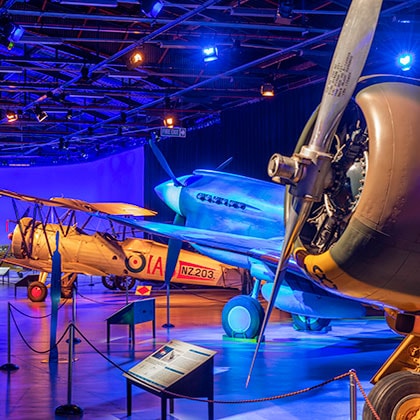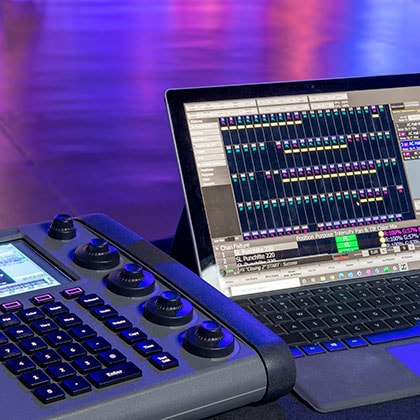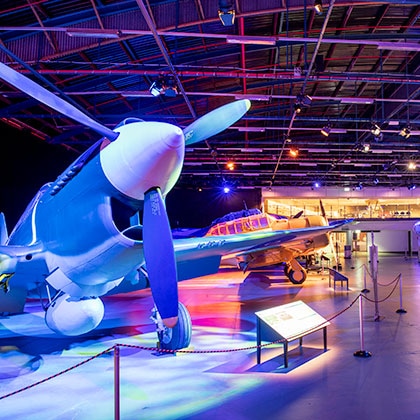The Air Force Museum of New Zealand recently rearranged its historic collection of airplanes, which are housed in a number of spaces including the main Aircraft Hall. The team took the opportunity during the changeover to replace the existing lighting system to an LED rig, to dramatically reduce power consumption and provide a more flexible, long-lasting, and dynamic solution.
In collaboration with Christchurch-based The Light Site, the museum’s AV technical team specified more than 100 powerful, honeycomb-lens SL Punchlite 220 fixtures, which are now installed to beam rich, blended, and saturated colors onto classic airplanes such as a Spitfire, Hudson, and Avenger, and washing the space with hues.
To control the luminaires in the Aircraft Hall and for multi-room control of six other spaces, including further display areas, lecture theatres, restrooms, and the main atrium, the technical team invested in a Neo Compact 10 Console. A Vision.Net architectural control system has also been installed for a seamless, integrated lighting control experience across all the sites to help the team manage looks, power lighting scenes, and simplify management.
“We needed a replacement control system that would be able to manage a large number of fixtures, run multiple cue lists, accept inputs from a variety of sources, and run time-based events,” says David Nicholson from the museum, who oversaw the project. “The Neo and Vision.Net combination offers this solution and we are now using the C10 for programming the lighting states in the Aircraft Hall with great success. There were many benefits, including the C10’s compact size, enabling us to easily move around the museum doing programming as we moved from plane to plane.”
In addition to the lighting, the Neo C10 and Vision.Net duo are also being used to run timeclock-based events such as audio announcements, video playback via screens around the venue, as well as building start-up and closedown each day. The museum’s technical team is using the full-featured Neo operating system software on a PC to control more than 500 desk channels, with regular events activated by its internal timeclock scheduler.
“Vision.Net screens provide all the human interface requirements around the complex,” Nicholson explains. “There are touchscreens in five locations and three physical button panels. The panels allow local control of some features, as well as more general functionality such as turning full complex on or off, putting the system into Event Mode to disable or play announcements, and activating on-demand display features.”
The Vision.Net system’s pre-set commands are all monitored by Neo, which in turn runs shortcuts to turn on and off required cue lists. Commands that Neo initiates are run back through the Vision.Net system to keep all Vision.Net screens in sync with the real-world system status. The Vision.Net system also facilitates the customization of each screen depending on its location, as well as password-locked and hidden screens for additional setup and maintenance options.
In addition to the plane displays, the museum uses the Aircraft Hall for events and functions, and the lighting is used to create fitting ambience for a variety of occasions. “The lighting designers for the installation, David Nicholson, Joe Hayes, and Grant Robertson all have a strong theatre design background,” says Nicholson. “Rather than follow the traditional museum lighting approach, we have used the LED fixtures and the Neo to create a wide range of lighting states and enhance the displays using theatrical techniques.”
The new rig was designed by David Nicholson in collaboration with lighting designer Joe Hayes, as well as Grant Robertson from Christchurch-based Vari-Lite supplier The Light Site, who also managed the initial design concepts of the Vision.Net and Neo setup. Glenn Stewart from Kenderdine Electrical supplied the Neo and Vision.Net hardware and conducted all the Vision.Net programming. Darren McKane from The Light Site did all the Neo cue and integration programming.






